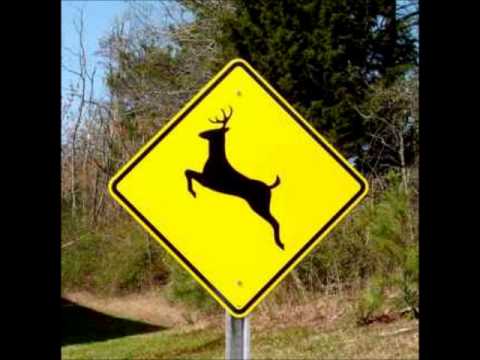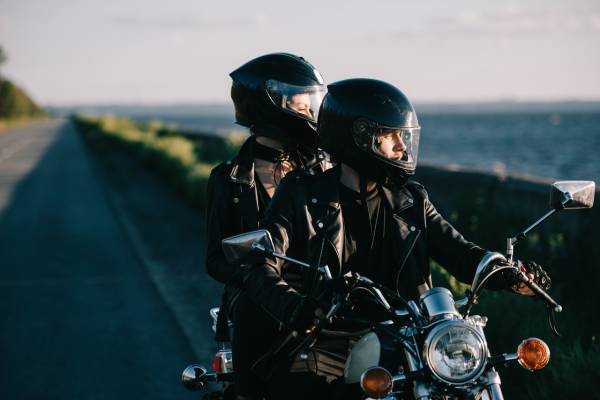We’ve all heard about bikers striking animals — deer, dogs, cats, squirrels, raccoons, skunks, you name it — but one unlucky motorcyclist recently tangled with a bee and landed in the hospital.
Elizabeth Weller, 30, of the Canandaigua, N.Y., area, was riding not far from her home Thursday evening when she was stung and had an allergic reaction. She lost control of her motorcycle and crashed, suffering bruises and swelling in her right knee, according to news reports here and here.
Fortunately, she was wearing a helmet and should be OK, the reports say.
 We’re always on the lookout for bigger animals like deer, but we’re vulnerable to insects and insect size dangers as well. Getting hit by a bee or wasp at 60 or 70 mph feels like you been hit by a rock – until you’ve actually been hit by a rock at that speed! I took a rock off the knee at highway speeds last year and it was exquisitely painful! My best advice when you’ve been hit by something while on the road is to stay calm. Assess yourself – whether you’ve been injured – and get off the road quickly and safely if you have.
We’re always on the lookout for bigger animals like deer, but we’re vulnerable to insects and insect size dangers as well. Getting hit by a bee or wasp at 60 or 70 mph feels like you been hit by a rock – until you’ve actually been hit by a rock at that speed! I took a rock off the knee at highway speeds last year and it was exquisitely painful! My best advice when you’ve been hit by something while on the road is to stay calm. Assess yourself – whether you’ve been injured – and get off the road quickly and safely if you have.
Its almost impossible to avoid getting hit by insects and rocks, but what should you do when a larger animal runs out in front of us? The temptation will be to swerve hard in a attempt to avoid it, but this could be the last thing you want to do. Unless you are sure you can get around it my advice is NOT to take any severe evasive actions. The last thing you want to do is hit that thing anyway, while at the very edge of control – that is sure to end up with both you and your bike going down. Instead, my advice is to brake hard to scrub as much speed as you can, and if the creature or object is still in your path, let off the brake and go over it. Your chances of staying upright are substantially increased if you go over the object at a reduced speed and under control, then while attempting a swerve.
Motorcyclecruiser.com offers the following tips about motorcycle safety on rural roads:
- Deer travel in groups. One deer means there are probably more, so even if the one you see is off the road and going away, slow way down immediately.
- Heed deer-crossing signs, particularly in the seasons and times of day when deer are active. Slow down, use your high beam, and cover the brakes.
- Additional good, powerful driving lights are worth their weight in gold on a deserted road at night. Alternatively, fit a bulb with a 100-watt high-beam.
- Noise—a horn, revving your engine, etc.—may drive deer away.
- Flashing your high beams may break the spell that seems to cause deer to freeze.
- If an animal has been injured, stay away. It may attack or injure you unintentionally if it comes to and tries to escape.
- If a collision appears imminent, do not swerve. Braking hard right up to the point of impact is good, but you want to be stabilized if you do collide, which will give you the greatest chance of remaining upright.
- If riding in a group, spread out. This will keep one rider who hits a deer from taking other riders down with him.
- Wear protective gear. As with other crashes, no one plans to hit an animal. The only way to be ready when it happens is to be ready on every ride. Wearing a helmet for a relaxing evening ride may seem unnecessary, since you are taking it easy, but the deer won’t care.
To read more great safe riding tips, go to a recent post I wrote about another motorcycle accident in the Twin Tiers. Unfortunately, a Pennsylvania man died in that crash.
Thanks for reading, and remember to ride safely!
__________________________________________
ZiffLaw Attorney, Esq.
NY and PA Injury and Accident Attorney
The Ziff Law Firm, LLP
303 William Street
Elmira, NY 14901
Phone: (607)733-8866
Fax: (607)732-6062
Email: info@zifflaw.com
www.zifflaw.com

